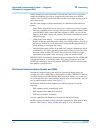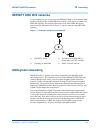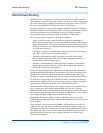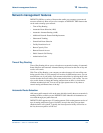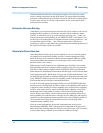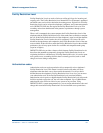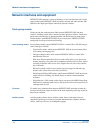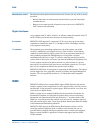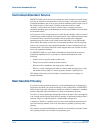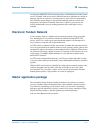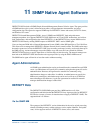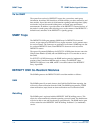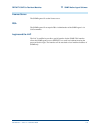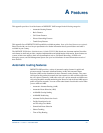
Centralized Attendant Service 10 Networking
Overview
555-233-001 — Issue 2 — November 2000
10-
10
Centralized Attendant Service
DEFINITY ONE owners who have more than one switch location can benefit greatly
by using the Centralized Attendant Service (CAS) feature. CAS reduces the number
of required attendants, and, in most cases, all those attendants can be located at one of
the switch locations, called “main.” Switches at the other locations, called
“branches,” redirect their calls to the CAS main. Thus, a company can have a
centralized attendant group at the headquarters office and can handle calls from there
for the branch offices.
All locations in a CAS arrangement have a listed directory number. Calls to a branch
listed directory number terminate at the main location, even if the branch location has
an attendant. These listed directory number calls are routed to the centralized
attendant group over trunk circuits called release-link trunks or over QSIG trunks.
These release-link trunks are used only for centralized attendant calls and signaling.
After a call is processed by the centralized attendant, it can be extended back to the
branch location. The release-link trunk is then dropped and made available for other
calls to the centralized attendant.
If a DEFINITY ONE is a node within a Distributed Communication System and
Centralized Attendant Service is provided, a centralized attendant can do the
following:
• Control access to specific trunks at other nodes
• Directly access specific trunks at another location
• Place test calls to telephones and trunk groups at other nodes
• Receive a visual warning that all trunks in a remote trunk group are busy or that
the number of busy trunks in a remote group has reached a specified level
This feature ensures that all calls directed to an attendant at your company are
handled efficiently.
Main/Satellite/Tributary
If you have modest network requirements, a main/satellite/tributary configuration is
an attractive possibility for private networking. In this configuration, one DEFINITY
ONE location is the main, and remote switches are satellites or tributaries. Attendant
positions and public network facilities are usually concentrated at the main.
All calls to or from a satellite pass through the switch at the main. The system appears
to be a single switch with one listed directory number. A uniform dial plan provides a
common 4-digit or 5-digit dial plan for a main/satellite configuration.
A tributary is similar to a satellite, but it has one or more attendant positions and its
own listed directory number. Calls to its listed directory number go directly to the
tributary.
The switches in a main/satellite/tributary network are connected by tie trunks. Trunks
and switching facilities can be added as requirements grow.



